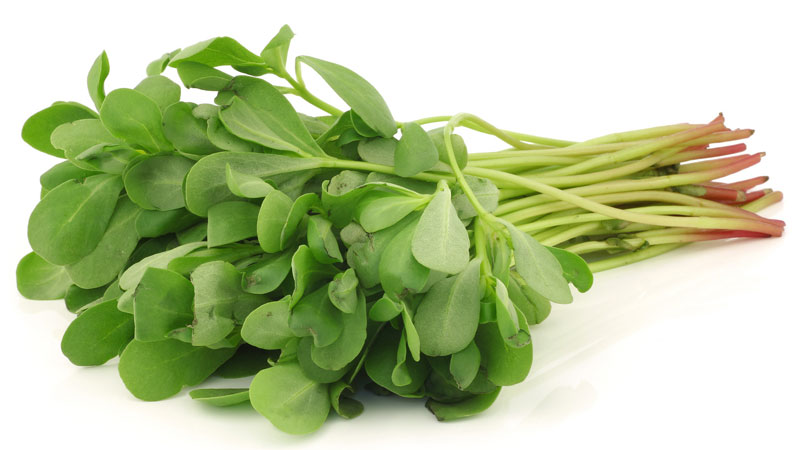Spinach and Other Leafy Greens
Spinach, kale, chard, and other leafy greens are loaded with vitamins, such as folate; minerals, such as magnesium; a range of phytonutrients; and insoluble fiber — all of which have virtually no impact on your blood sugar level. Mark Hyman, MD, author of The Blood Sugar Solution (Little, Brown and Company), calls leafy greens “free foods,” which means you should eat as many of them as you can. Bonus: The fiber in leafy greens will slow absorption of any carbohydrates (e.g., potatoes or bread) they’re paired with, resulting in a healthier overall glycemic load.
Go Nuts
Nuts of all sorts — walnuts, pecans, take your choice! — are great for controlling blood sugar. Despite their diminutive size, nuts are power packages of protein, unsaturated (healthy) fat, and fiber. Those three factors have a positive impact on blood sugar levels. In a recent study, participants who ate 2 1/2 ounces of nuts daily had an 8% decrease in their A1c levels. Keep in mind that nuts also pack plenty of calories. Your best bet is to substitute nuts for high-carbohydrate foods, such as croutons or pretzels. Sprinkle them on yogurt and salads, or nibble them for a snack.
Open a Can of Sardines
You want to land fish on your plate, especially fatty, cold-water fish. Sardines and other small, fatty fish are high in essential omega-3 fatty acids that our bodies can only get from the food we eat. Sardines and other omega-3-rich fish help in a couple of ways: They’re a great source of fat and protein to slow absorption of blood sugars, and they help protect your cardiovascular system, which irregular blood sugar fluctuations can damage. The healthy fat in sardines is good for your brain, too, and may help fend off Alzheimer’s disease and dementia.
Dip Into Hummus
Hummus, a Middle Eastern specialty, is a great addition to your diet. The fiber and protein in chickpeas — 12 grams of dietary fiber and 15 grams of protein per cup — help regulate the absorption of the sugars from the starch so your blood sugar stays on an even keel. The healthy fats from the tahini (made from ground sesame seeds) and olive oil slows the absorption of sugars even more. Pair your hummus with vegetables and whole-grain crackers for an even greater effect.
Chia Seeds
High in protein and loaded with fiber and omega-3 fatty acids, chia seeds are a nutritional powerhouse. They actually lower blood sugar due to the fiber and omega-3 fatty acid content. There’s some evidence that chia seeds help reduce belly fat — the kind that contributes to insulin resistance.
Sprinkle on Cinnamon
Studies have shown that as little as a teaspoon of cinnamon a day may significantly decrease fasting blood glucose levels and increase insulin sensitivity. There are lots of ways to add more cinnamon to your diet. Sprinkle some in your coffee, stir it into your morning oatmeal, or add it to rubs for chicken or fish.
Love Your Lentils
Lentils are smart legumes when managing your blood sugar. They contain a good amount of starch (normally a no-no when managing blood sugar), which gives them a satisfying, hearty creaminess. Lentils are also packed with both soluble and insoluble dietary fiber. Soluble fiber turns into a gel-like consistency during digestion, which slows absorption of the sugar molecules in the starch. Insoluble fiber passes through the digestive tract without “registering” as a carbohydrate, while slowing down the whole digestive process so you stay satisfied and your blood sugar remains steady.
Make Room for Quinoa
Quinoa is a super grain for many reasons: It’s one of the few non-animal proteins that’s considered a “complete protein” in that it has all of the essential amino acids your body needs to build protein molecules. Plus, quinoa is a whole grain with germ, endosperm, and bran intact, bringing a host of nutrients and healthy fat to the mix. Even better, all those benefits come with very little impact on your blood sugar level. A half-cup of cooked quinoa ranks just under 10 (that’s low!) on the glycemic load scale. It’s easy to add quinoa to meals. Try using it in place of white rice as a side.
Switch to Whole-Grain Pasta
Think comforting bowls of pasta are off the menu, think again. Whole-grain pastas are a great source of B vitamins and fiber, and reduce inflammation in the blood vessels. However, this food does come with a couple warning flags. First, overcooking pasta raises its glycemic load (follow the package directions and pull the pasta off the heat when it’s al dente). Second, beware of portion size. A good bet is to pair 1/2 to 1 cup of cooked pasta with a bevy of vegetables and a bit of lean protein and healthy fat for a dish that’s easy on your blood sugar.
Drizzle on Extra-Virgin Olive Oil
When you savor the peppery zing of extra-virgin olive oil, you’re tasting powerful antioxidants. The phytonutrients that bring the bite also have an anti-inflammatory effect on your body. That helps protect and repair the cardiovascular system, which constant fluctuations in blood sugar can damage. Olive oil is also incredibly versatile. It’s appropriate for anything from salads to sautées. Best of all, it slows absorption of the carbohydrates it’s paired with for a healthier glycemic load overall.

